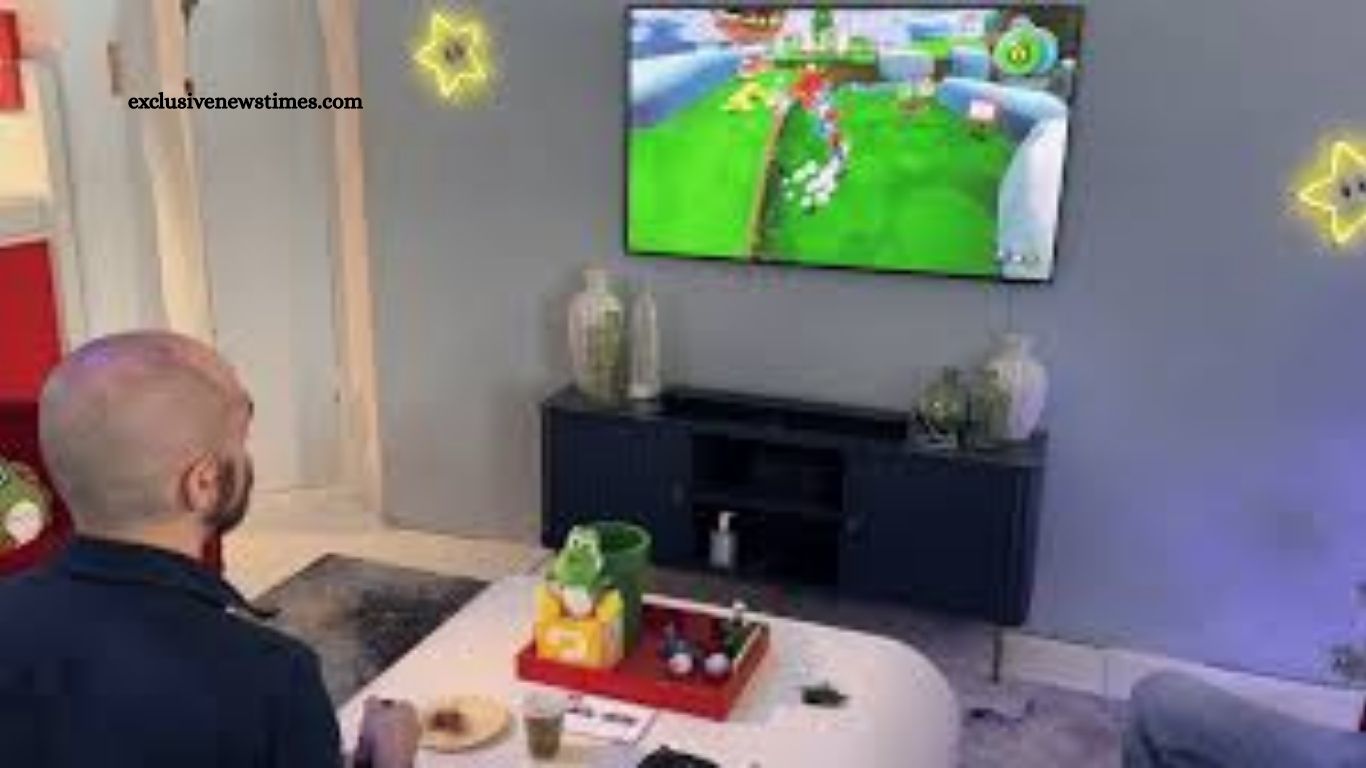Remember Super Mario Galaxy (not the upcoming movie)? You should. Originally released on Nintendo’s quirkiest console, the Wii with its TV remote–shaped controller—it was a groundbreaking platformer. No other game has captured its wild gravity mechanics, flinging Mario across tiny planets while the camera struggles to keep up.
Nearly two decades later, it’s back on the Switch 2. Playing across a 4K TV feels just as magical as it did on my old CRT in 2007. The visuals are sharper, but does swapping the Wii Remote for a Joy-Con 2 change the feel? Nintendo let me sample a level from both Galaxy titles, now repackaged with upgrades, extras, and a surprisingly steep price tag.
Read More: Meta Ray-Ban Smart Glasses: A First Look at the Hype
Gyro Isn’t Quite the Same as the Wii Remote
The original Galaxy relied on the Wii Remote and Nunchuk for Mario’s jumps and attacks, while the pointer let you scoop up Star Bits and fling them at enemies. Controls were streamlined compared to Super Mario 64 or Sunshine, making up for the Wii Remote’s limited buttons. On the Switch 2, the experience can only approximate the original.
Joy-Con 2 controllers use built-in gyroscopes to simulate the pointer. Motion controls or the X button trigger Mario’s spin attack, while ZR launches Star Bits or grabs Pull Stars. In Galaxy 2, gyro aiming also guides Yoshi’s tongue for snatching and tossing enemies.
The Joy-Cons feel more comfortable than a Pro controller or third-party pad for this style of play. Unlike the Wii, the Switch 2 doesn’t use an infrared sensor bar; you reset the cursor with an R button tap. You don’t need to point directly at the screen, though your cursor can drift if your hand moves.
In my demo, the Joy-Con 2 occasionally lost sync, but Nintendo said it was due to the crowded setup and shouldn’t happen in the final game. Even so, this Switch 2 version is undeniably superior. The jump from 480p to 4K with widescreen turns Galaxy into a luminous storybook: colors pop, textures shine, and the universe sparkles, making the original Wii version feel almost primitive.
Metroid Prime 4: Beyond Shines With Gyro and Mouse
If there’s one missing feature, it’s native mouse support. When Nintendo first teased Metroid Prime 4: Beyond, mouse controls felt like a given—yet they’re absent on Switch 2. It’s a missed opportunity for a game built on precision.
I played the first level, the same demo from before the Switch 2 reveal, and it’s clear why this title is a console standout. It combines Metroid Prime’s lock-on mechanic with gyro aiming reminiscent of Prime 3: Corruption on the Wii. The highlight: seamlessly swapping to mouse-like input by setting the Joy-Con 2 flat, offering instant precision.
This control flexibility makes you wonder why more Switch 2 games don’t adopt it. Cyberpunk 2077’s port, for example, could have benefited greatly. After playing, I hope Nintendo brings this setup to future releases—or backports it to Metroid Prime: Remastered. Beyond proves that the series’ exploration and combat feel sharper than ever with modern controls.
Frequently Asked Questions
Is Super Mario Galaxy on Switch 2 a remake or remaster?
It’s a remaster: upgraded textures, 4K resolution, widescreen, and new Assist features, but core gameplay remains the same.
Can I play Super Mario Galaxy without motion controls?
Yes—button inputs on Joy-Con 2 or the Pro Controller work, though gyro still feels better for certain actions.
Does Metroid Prime 4: Beyond support mouse and keyboard?
Partially. You can swap gyro aiming for mouse-like precision with the Joy-Con 2 on a flat surface, but full keyboard + mouse support is absent.
Is gyro aiming better than the Wii Remote?
It’s different: more comfortable and doesn’t require a sensor bar, but pointer precision isn’t quite as sharp.
When is Metroid Prime 4: Beyond releasing?
No firm release date yet, though the demo suggests development is well underway.
Conclusion
The Switch 2 strikes a balance between nostalgia and innovation. Super Mario Galaxy proves an 18-year-old game can feel magical in 4K, with Joy-Con 2 gyro controls offering a comfortable—but not identical—experience to the Wii Remote. Metroid Prime 4: Beyond highlights the console’s potential for modern precision, blending gyro and mouse-like input for some of Nintendo’s tightest, most flexible controls in years. Together, these titles showcase how the Switch 2 bridges past and future, delighting longtime fans while pushing gameplay possibilities forward.


